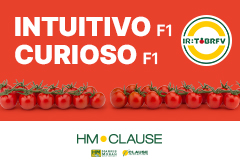Fruit Attraction, organised by IFEMA and FEPEX, is preparing its on-site trade fair from the 5th to the 7th of October in Madrid, which will mean the commercial reunion of the fruit and vegetable growing sector in 2021, the International Year of Fruit and Vegetables, declared by the Food and Agriculture Organisation (FAO) of the United Nations
This on-site trade fair will be promoted and complemented with the digital platform LIVEConnect, started up in 2020 as a new work instrument and which this year will be operational from May onwards. Using this technology, the trade fair will bring together the entire fruit and vegetable growing community 365 days of the year.
Raúl Calleja, Director of the trade fair, indicates that “the Institution has implemented a protocol that brings together all the necessary steps to arrange the flow of people attending and their mobility; capacity controls; interpersonal distances; digital enrolment; body temperature and the incorporation of the latest technology for counting those attending, and very particularly, for the renewal of the air in the halls, amongst other innovations in this field.”
The chairman of FEPEX and of the Organising Committee of Fruit Attraction, Jorge Brotons, expressed the commitment to the fair and with it being held on-site, also pointing out that it continues to be the main promotional instrument of the fruit and vegetable sector and contributing to making trade amongst all the agents of the value chain easier.
Furthermore, the Manager of FEPEX, Jose María Pozancos, emphasised that, according to the current forecasts, for October the healthcare situation will be much better, meaning that the juncture will be favourable for the in person development of FRUIT ATTRACTION, which will hold its edition number 13. He also underscored the unifying nature of the trade fair for the fruit and vegetable sector, which exceeds 50% of the Agricultural Vegetable Production and that has 65% of its invoicing in exports. He also reported on the good behaviour of consumption last year, which grew by 11% compared to 2019, with data up to November 2020, reaching figures of 192 kilos of consumption per capita.
























